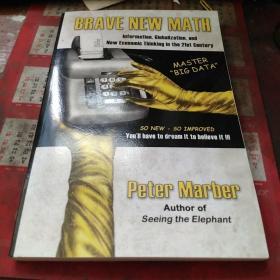
现货The New Math: A Political History[9780226184968]
¥ 380 九五品
仅1件
作者Phillips, Christopher J
出版社University of Chicago Press
ISBN9780226184968
出版时间2014-11
装帧精装
纸张其他
页数224页
正文语种英语
上书时间2023-04-14
- 最新上架
商品详情
- 品相描述:九五品
- 商品描述
- An era of sweeping cultural change in America, the postwar years saw the rise of beatniks and hippies, the birth of feminism, and the release of the first video game. It was also the era of new math. Introduced to US schools in the late 1950s and 1960s, the new math was a curricular answer to Cold War fears of American intellectual inadequacy. In the age of Sputnik and increasingly sophisticated technological systems and machines, math class came to be viewed as a crucial component of the education of intelligent, virtuous citizens who would be able to compete on a global scale. In this history, Christopher J. Phillips examines the rise and fall of the new math as a marker of the period's political and social ferment. Neither the new math curriculum designers nor its diverse legions of supporters concentrated on whether the new math would improve students' calculation ability. Rather, they felt the new math would train children to think in the right way, instilling in studen
相关推荐
-

Math Workout For The NEW SAT
九品北京
¥ 27.00
-

Math Workbook for the New SAT
八五品廊坊
¥ 18.00
-

BARRONS MATH WORKBOOK FOR THE NEW SAT
八五品信阳
¥ 38.00
-

BRAVE NEW MATH
九品北京
¥ 120.00
-

BARRON'S MATH WORKBOOK FOR THE NEW SAT
九品北京
¥ 40.00
-

正版实拍! Math Workout For The NEW SAT
九品周口
¥ 45.00
-

Kaplan New SAT MATH Workbook
八五品周口
¥ 268.00
-

do the math
九品北京
¥ 72.00
-

DO the Math
九品北京
¥ 92.00
-

~现货!The New Rational Manager
九品杭州
¥ 26.90
— 没有更多了 —
![现货The New Math: A Political History[9780226184968]](https://www0.kfzimg.com/sw/kfz-cos/kfzimg/17733071/94b172ad4cf11a5a_b.jpg)

![现货Materials and Technologies of Modern Production[9783036401683]](https://www0.kfzimg.com/sw/kfz-cos/kfzimg/17733071/5fd2824531e165d7_s.jpg)
![现货Introduction to Container Ship Operations and Onboard Safety[9781032155425]](https://www0.kfzimg.com/sw/kfz-cos/kfzimg/17733071/58b7ff43ef7909ee_s.jpg)
![现货Electrophosphorescent Materials and Devices[9789814877343]](https://www0.kfzimg.com/sw/kfz-cos/kfzimg/17733071/18cc1d77bcb7b488_s.jpg)
![现货Organic Semiconductors for Optoelectronics[9781119146100]](https://www0.kfzimg.com/sw/kfz-cos/kfzimg/17733071/24c85a750c708964_s.jpg)
![现货Advances in Food Rheology and Its Applications[9780081004319]](https://www0.kfzimg.com/sw/kfz-cos/kfzimg/17733071/e0c11603c9119d4d_s.jpg)
![现货Advanced Materials and Sustainable Technologies[9783035727562]](https://www0.kfzimg.com/sw/kfz-cos/kfzimg/17733071/dced675333874c48_s.jpg)
![现货Advanced Materials and Manufacturing Engineering II[9783035712681]](https://www0.kfzimg.com/sw/kfz-cos/kfzimg/17733071/660ccfae75fa8d3e_s.jpg)
![现货Materials in Machinery and Construction[9783035718119]](https://www0.kfzimg.com/sw/kfz-cos/kfzimg/17733071/6f402060775e9daa_s.jpg)
![现货Cereal Grain Quality (Softcover Reprint of the Original 1st 1996)[9789401071772]](https://www0.kfzimg.com/sw/kfz-cos/kfzimg/17733071/f93ca1c96a97403a_s.jpg)
![现货The New Math: A Political History[9780226184968]](/dist/img/error.jpg)

以下为对购买帮助不大的评价